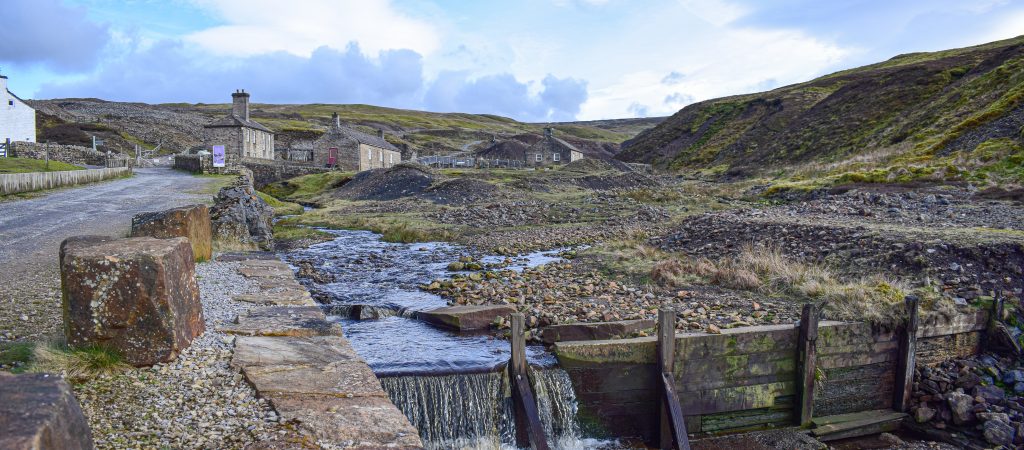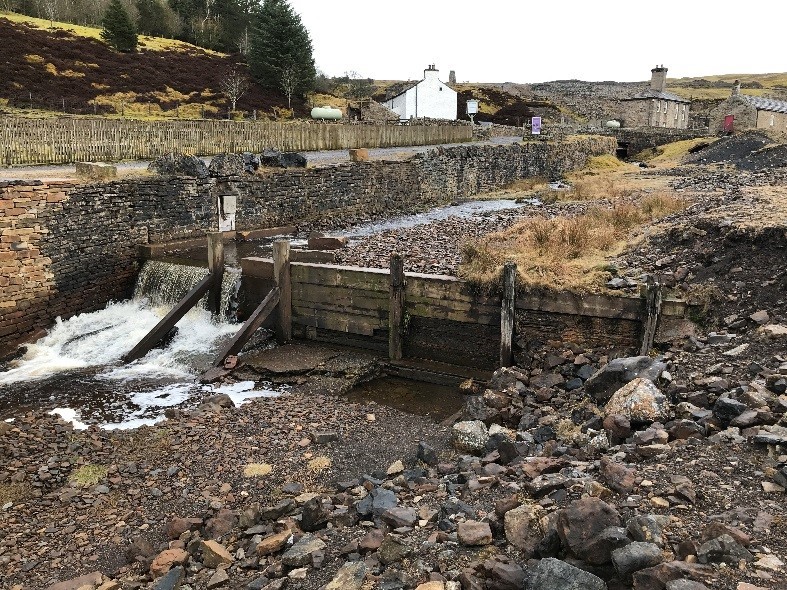
Diffuse Interventions
Some of the river pollution is caused by water running across the site and washing metals out of the old mining waste.
Surface water management
We are also looking into how we can limit diffuse pollution by improving how surface water moves around the site in streams and leats. We are talking to the Nenthead Mines Conservation Society and Historic England to understand whether improvements can be made whilst also protecting the important industrial archaeology.
Check Weir Improvements A lot of metal contaminated material is in the river already. Just downstream of the Rampgill Burn, there is an old “check weir” which has trapped sediments and metals but is now ‘full’ (see the photograph below).

We are looking at ways we can remove some of the existing sediments and encourage even more metals to be captured in future. We also want to try and limit future damage to the retaining wall which supports the gravel access track.
Preventing erosion of diffuse metals
The Tyne Rivers Trust have already completed installing a number of interventions along the River Nent and connecting watercourses to prevent metal contaminated sediment from washing in to the river network.
They have used natural materials such as log barriers which work to hold back contaminated soils and materials that are moved during high rainfall events, and Geo Coir matting to catch sediment and stabilise the spoil heaps.